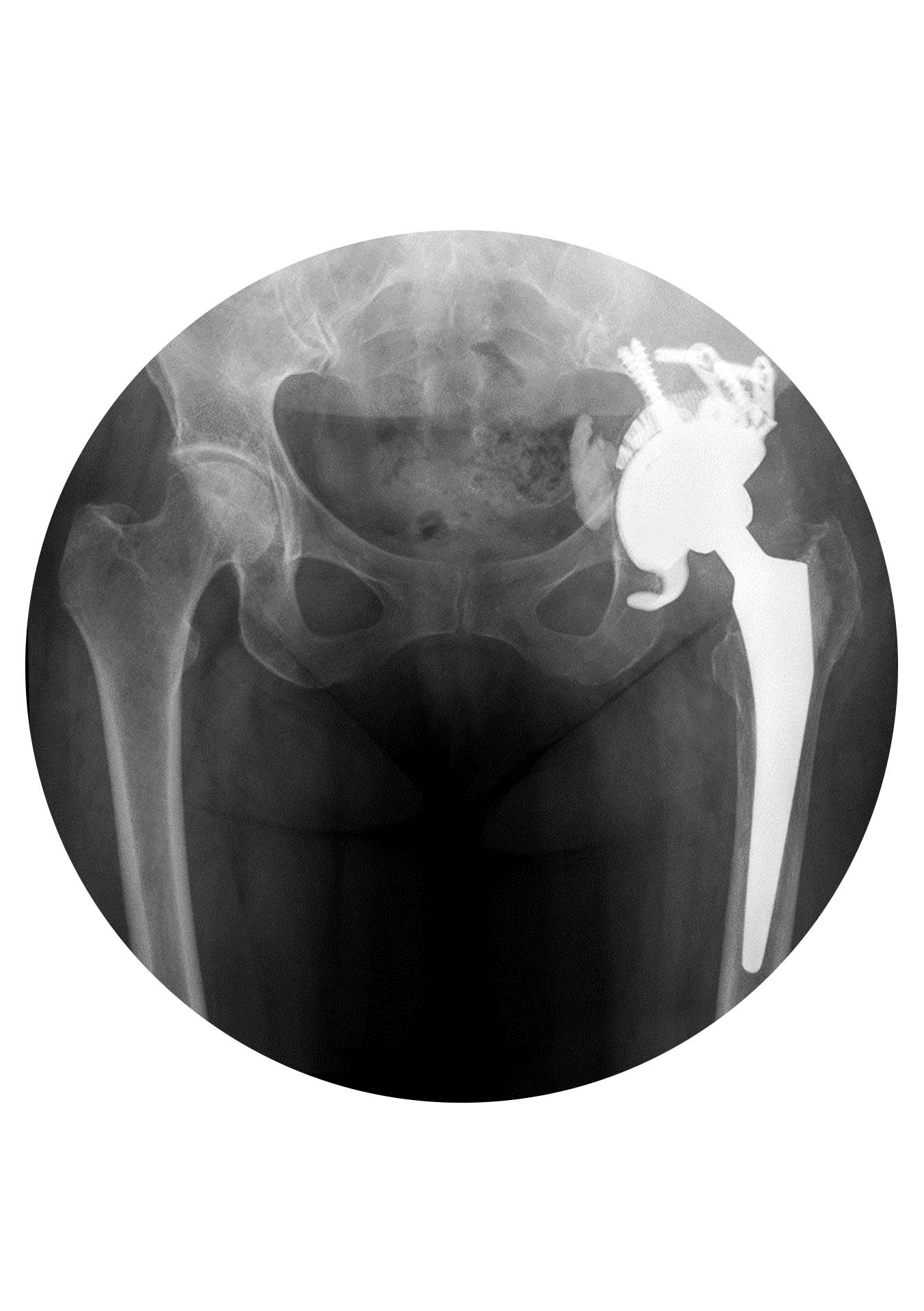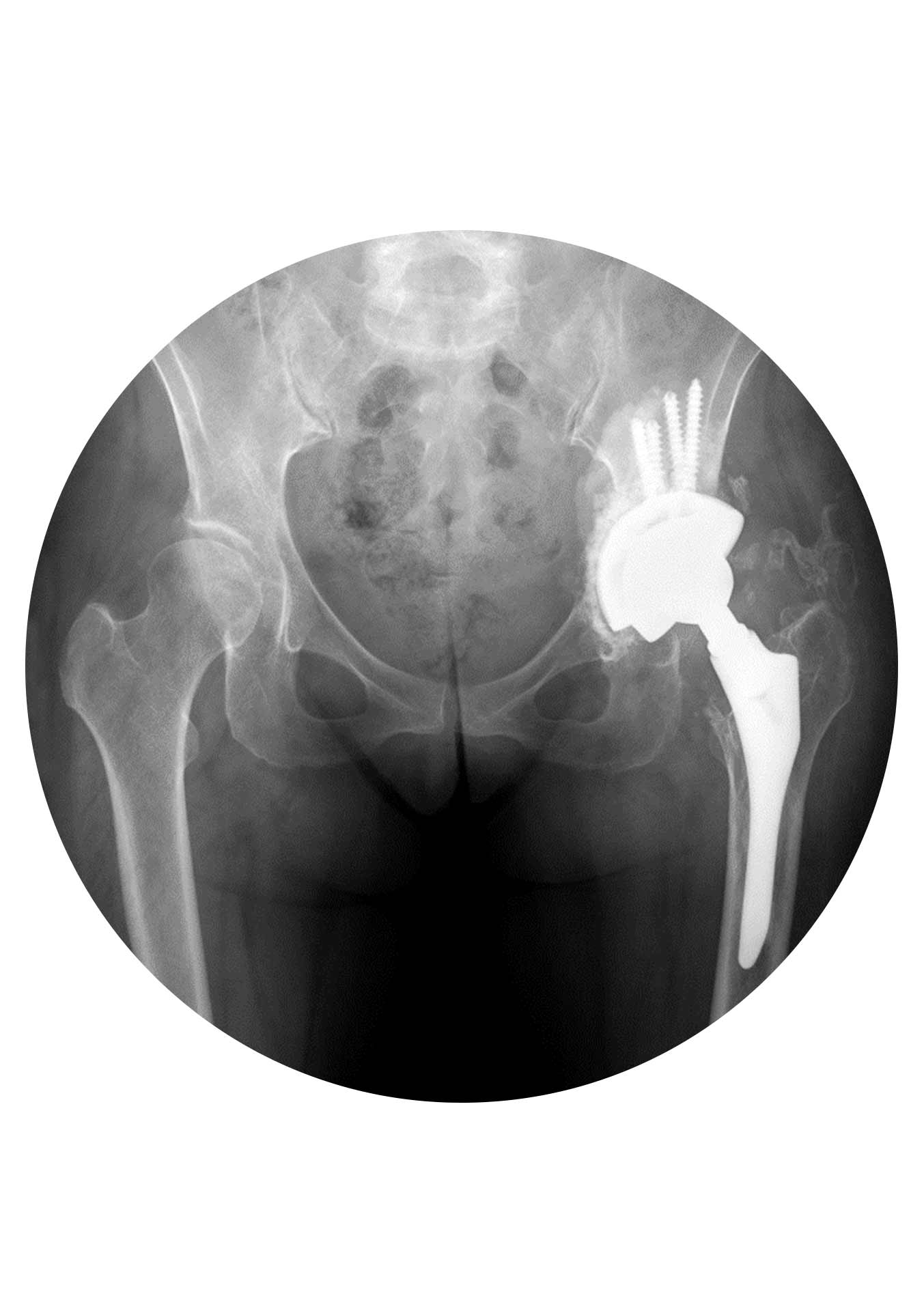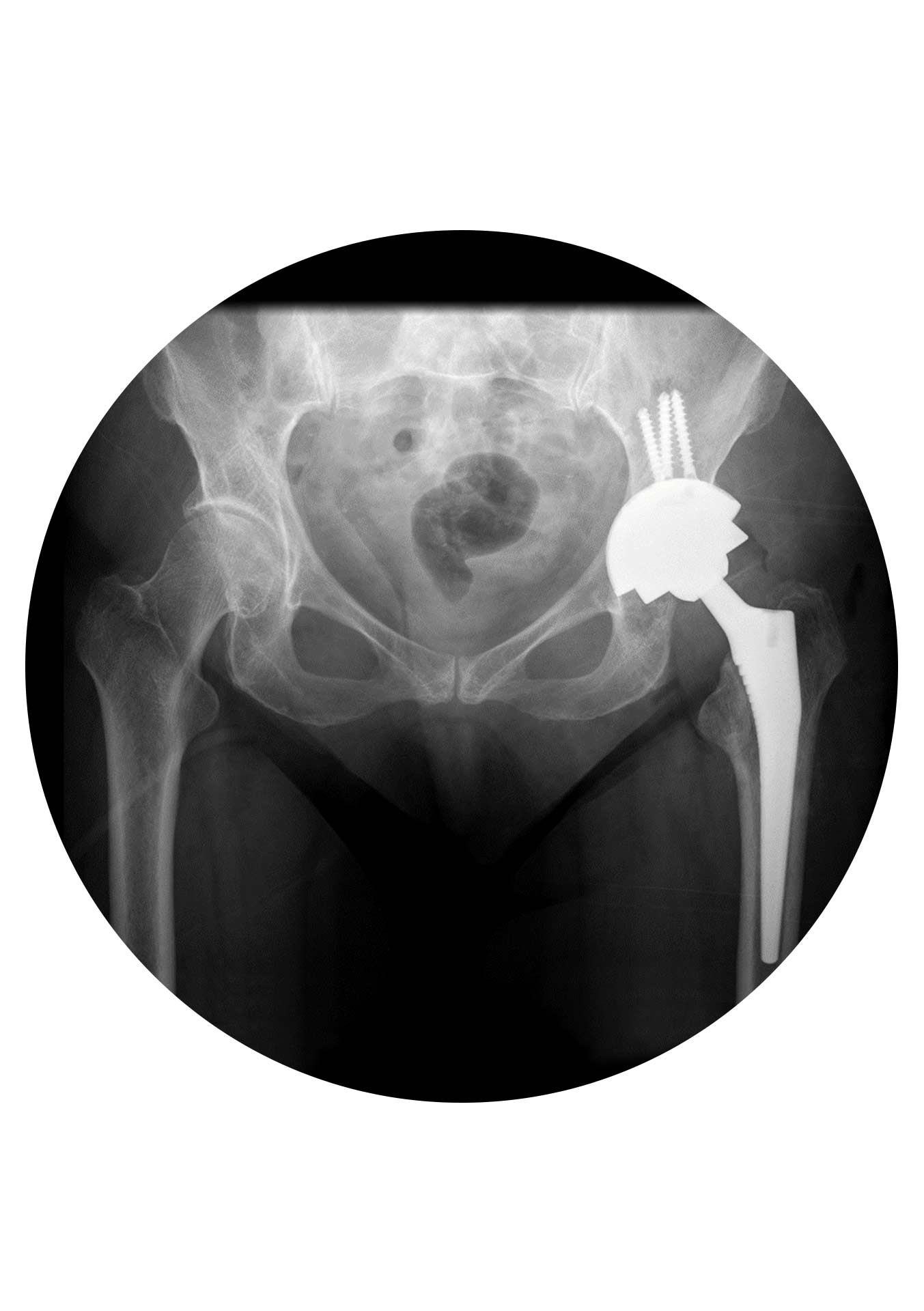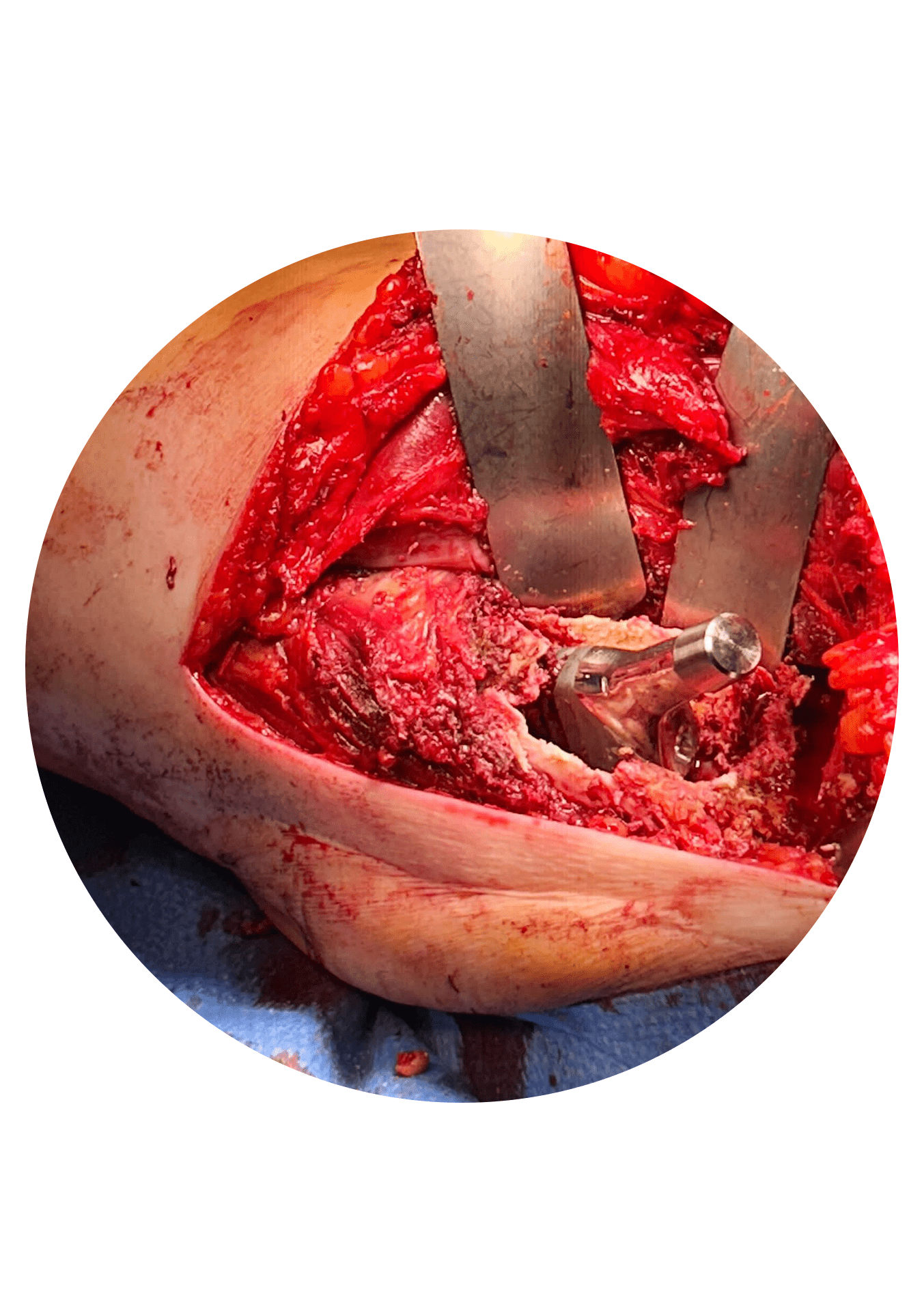A revision hip replacement surgery is performed whenever it is necessary to repair or replace a prosthesis (or part of a prosthesis) that over time has stopped working and/or is causing pain due to: infection, instability (“moving out of place”), wear and tear, peeling (“loose implant”) or fracture (of the implant or of the bone around the implant).
The goal of this surgery is to correct the problem so that the hip can function normally again. The main obstacle and challenge of these surgeries is “missing bone”, that is, bone destruction either by the cause of failure or by the removal of the implants at the time of revision. Its complexity varies a lot depending on the cause of failure and may range from the simple replacement of a “worn plastic” (polyethylene) to the total removal of the prosthesis and replacement by another one (at the same surgical time or some weeks after) in case of an infection.
The surgery has two major moments that must be planned meticulously:
First: removal of the deficient implant(s) and preservation of the competent implants. This is often the most complex moment of revision surgery. Its main goal is to remove only the implants that need to be replaced and, in the process, cause as little damage as possible to the bone structure of the joint to facilitate the next phase.
Second: reconstruction of the “new” joint. Although the timing of implant removal is important in the outcome of revision surgery, revision surgery is in essence reconstruction surgery.
Regarding the surgical approach this must be appropriate to each case and planned according to the goal… which implants to remove? What reconstructions are necessary… Acetabular? Femoral? Both? The approach par excellence for revision surgery is the posterior approach (cut in the posterior face of the hip in the gluteal zone with about 15 to 20 cm… this can be extended according to the objective of the surgery). In selected cases, it is possible to use the same approach used in the first surgery or to use a different one to facilitate the revision.
Regarding the available material (unlike the primary prosthesis) it is extremely varied and complex… being divided in a simplistic way into acetabular reconstruction material (nets, cages, multi-hole cups, augmentations and stops) and femoral reconstruction material (modular stems, Wagner type stems, stems with distal fixation, trochanteric plates and steel cables) … up to customized material (implants produced specifically for each case).
Despite the approach and the material used, the success of a revision surgery depends for the most part on the correct diagnosis of the cause of failure of the prosthesis and planning its solution. Pain is the alarm signal, especially in a prosthesis which does not hurt! A painful hip replacement must be investigated to detect any of the causes of failure and possible revision surgery.





